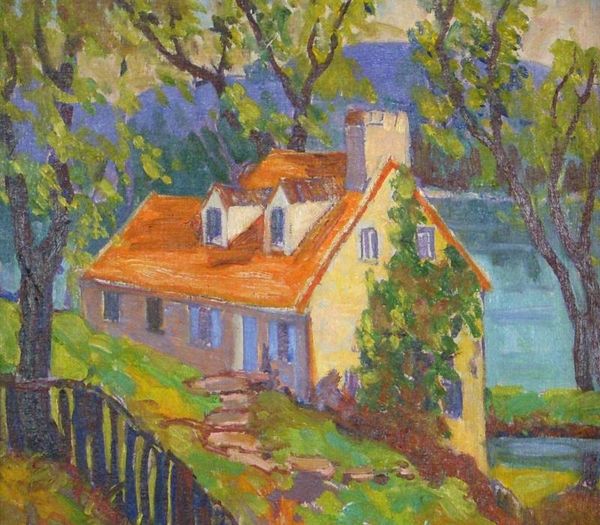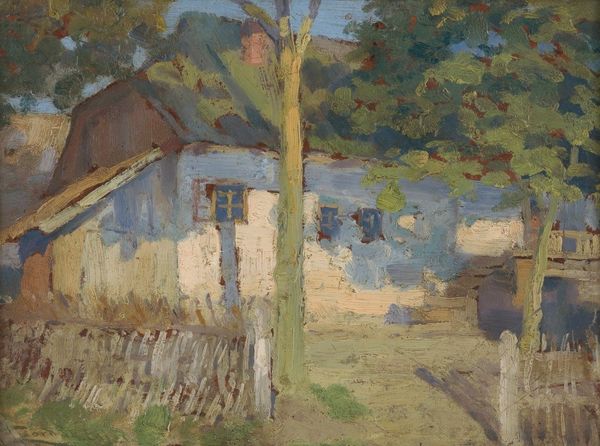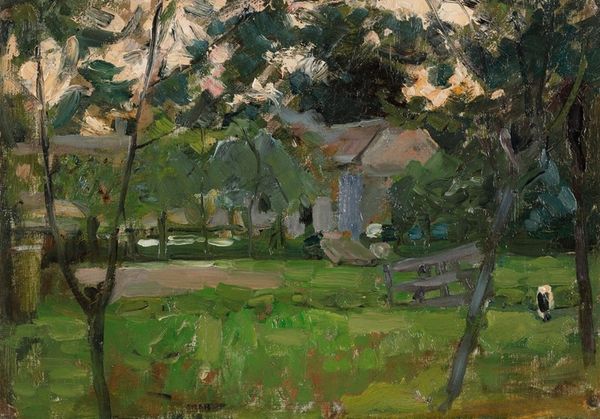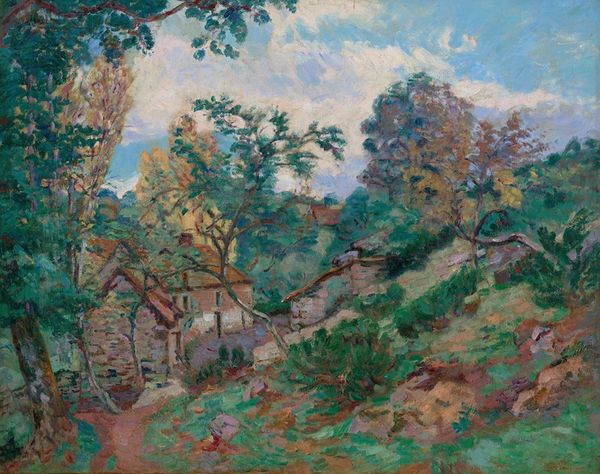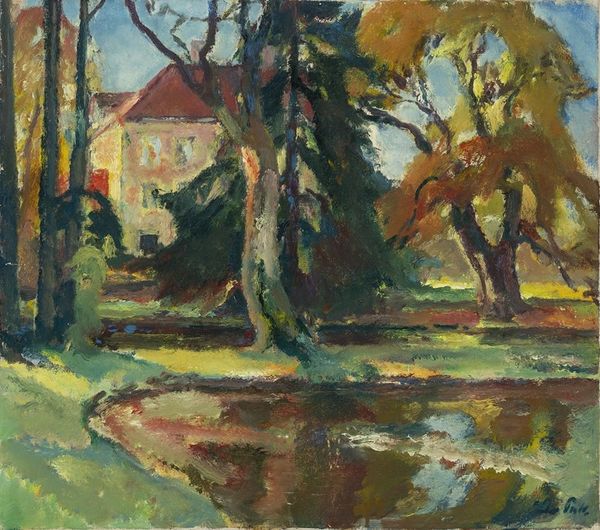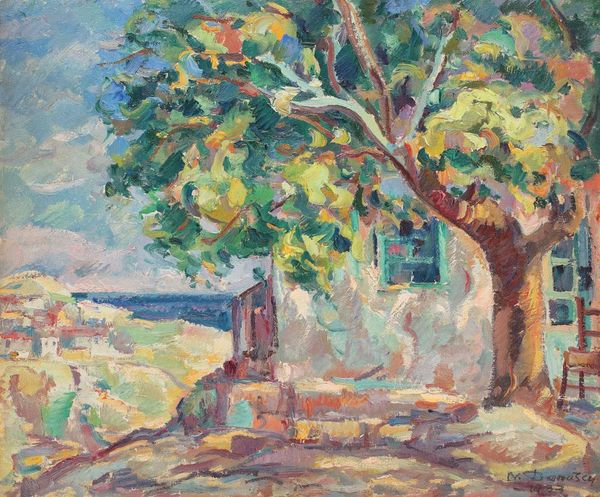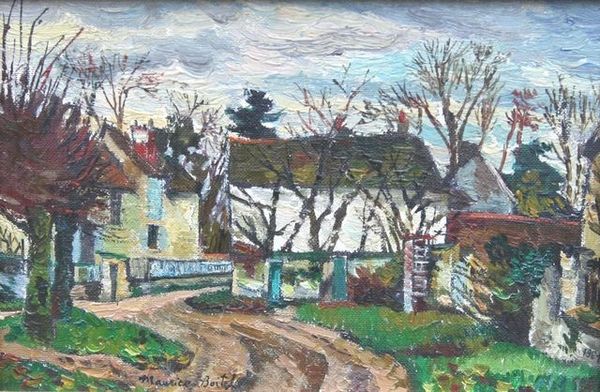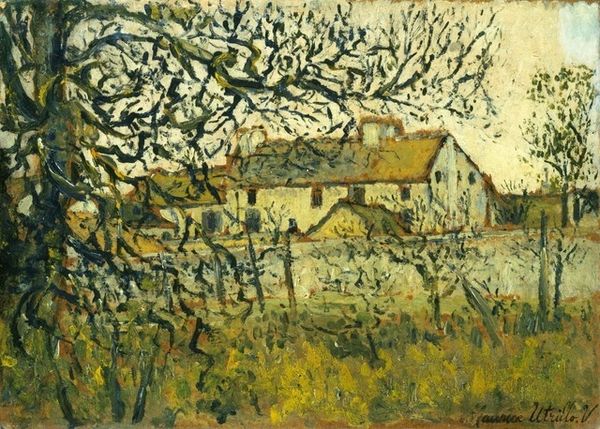
painting, oil-paint
#
painting
#
oil-paint
#
landscape
#
impressionist landscape
#
oil painting
#
modernism
#
realism
Copyright: Gregoire Boonzaier,Fair Use
Curator: Welcome. We're looking at Gregoire Boonzaier’s "Farmhouse with bare oaks," an oil painting from 1942. Editor: It has such a muted palette, all greys and whites and browns. The bare trees make it look so still and quite wintry. Is that light coming through or what’s going on? Curator: I find it interesting how Boonzaier balances the traditional landscape genre with modernist techniques. You can see a realist style in the subject matter, a typical Cape Dutch farmhouse. However, the loose brushstrokes and the muted colours signal the influence of European modernism on South African art. Editor: That broken brushstroke suggests the rough texture of tree bark, it brings you closer to its physicality. What can you tell me about the materials used? The oil paint looks applied very quickly. Curator: The heavy impasto, visible throughout, especially on the oaks and the roof, provides a strong tactile quality. Boonzaier’s commitment to realism went beyond just representing what he saw; he sought to capture the physical reality of the rural landscape in a South African social climate deeply affected by the Second World War. The bare oaks serve perhaps to reflect that sense of barreness that impacted farmers during that time. Editor: Yes. These textures provide an immediacy—you sense the artist really engaging with this landscape. Were such materials easily available back then? How would that have shaped artistic production, and Boonzaier's career as an artist in Cape Town in the '40s? Curator: Absolutely. Limited resources would certainly have influenced his material choices. Moreover, this painting was created during a politically charged period in South Africa, and while the subject matter seems apolitical, landscape paintings could still offer subtle commentary on the relationship between people and the land, with many black and coloured farmers and sharecroppers displaced during that era. Editor: It makes me reconsider the scene's tranquility. Seeing the world through Boonzaier's technique and process lets us touch upon so much of South Africa’s identity during that era, though it might look simple. Curator: Indeed. It’s an image rooted in place and time, its significance amplified by the techniques employed and the artist's engagement with his environment. Editor: Thank you. I now sense and see so much more to the landscape.
Comments
No comments
Be the first to comment and join the conversation on the ultimate creative platform.

